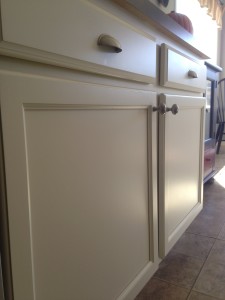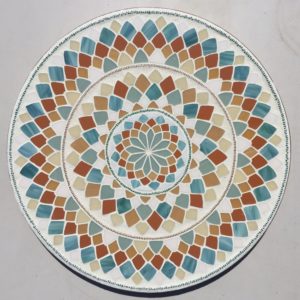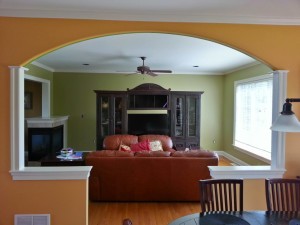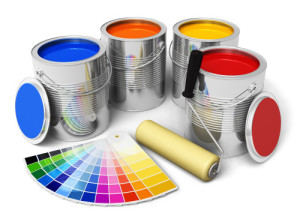Consumer Reports vs. The Professional Painter: What Paint Is REALLY Best And Why?
One of our favorite customers from Mechanicsburg, PA recently pointed out that Sherwin Williams Paint typically does not rate well in Consumer Reports, but it is all she ever sees us using in her home. She had asked a handy friend about this, and this person told her that contractors prefer Sherwin to the other because “they get better prices on it so they can make more profit when they sell it to their customers”. Is it possible we would compromise quality of work to save a few bucks on paint? Or could there be a more practical reason for our choices? Let’s take a closer look…
—Choosing Paint: Sherwin Williams vs. Behr vs. Benjamin Moore vs. Valspar vs. PPG. Most any professional painter who has been in the business for any length of time can tell you that there really isn’t a profit margin in paint. Even with the deepest of discounts, when you factor in the time it takes to figure out what you need and then drive to the store and back it becomes a wash at best.
Additionally, most residential contractors I know pass their discount on to their customers and consider picking up paint to be a courtesy to their customers – making it all the more difficult to consider profit from product in any area other than good old-fashioned customer service. As I explained to Jan – professional contractors will always try to use the best possible product for any given time within the budget, and the qualities we consider to be important may go beyond what the average DIYer would think about. Of course we consider things like durability and coverage, but there are many other factors that go into our decision making process. These factors include:
––Is this paint forgiving during the application process? Part of being a professional painter is the ability to get in and out of a customer’s house in a short period of time. This will involve a crew of highly-skilled laborers putting a lot of paint on the walls in a hurry (although never so fast as to compromise final result). Because of this, a paint that flows and level out well on its own is extremely appealing. DIYers don’t usually get enough time with any given paint to see a difference in this area, but folks who paint 40+ hours each week see it almost instantly. Having the ability to paint an area and trust it will look good without having to go back to it is crucial for us to keep a good pace.
—Is this paint capable of producing a uniform, even result with the use of both a brush and a roller? Often times the answer here is no, particularly with paints with higher levels of sheen. A cut line that looks different from areas covered by a roller can produce walls that look “picture boxed”, making a wall look like it has a frame around the edges. There are tricks to dealing with this, but they take a lot of time that I would much rather use to insure quality elsewhere on your job.
–Is this paint true to sheen? Most homeowners are unaware that there is a range for each level of paint sheen that is acceptable, so a “satin” from one company might look completely different from a “satin” from another company. In fact sometimes this varies from product line to product line within the same brand. In order to attain the look we are trying to achieve we must consider the light of the room and how much reflection the room will get from wall to wall.
—Does this paint dry slowly or quickly? And how long is the “open” time? Open time refers to the amount of time we have to work with paint before it starts to tack up and can’t be touched any more. What we are looking for here varies from project to project and can be affected by humidity, heat, wind, and the overall time I have to complete a given job. Sometimes we HAVE to get 2 coats done in one day, and in some cases we have to let paint cure overnight. –
—Other considerations may include: What is the age/sheen/and type of paint we are covering? Is it oil-based? Is there a lot of patching on the walls? Is soot/nicotine/water damage on the walls?
This is just a partial list. And while I did not get into this much detail with my customer, it should be noted that while we prefer more products from Sherwin Williams than other stores, there is an ideal use for paints from almost any manufacturer. A few items we find more efficient for certain applications include Valspar primers and Valspar Duramax exterior paints (Lowes), PPG/Pittsburgh Breakthrough and Manor Hall interior paints (Snyder’s Paint Store Lemoyne, PA), Behr Marquee interior paint(Home Depot), And Benjamin Moore Aura and Regal Select (Auman’s, Hershey, PA).
The last though I have on paint manufacturer selection that often serves as a tie-breaker is customer service. Sherwin Williams stores tend to have a larger staff and be much quicker at handling multiple orders at the same time. And they are EVERYWHERE. This is a huge advantage over Lowe’s and Home Depot when paint is needed in a pinch during a project due to a spec /color change or addition. They are not immune to customer service problems, but overall Sherwin Williams are the easiest of the large chain stores to deal with by far. The smaller, independent stores ( in our area Snyder’s in Lemoyne/Camp Hill and Auman’s in Hershey) usually have extremely knowledgeable staff members that can help with problem solving and answer even the most technical of questions. And they are not tied to any one manufacturer so they often have a better selection of paints and sundries to choose from. The only DISADVANTAGE with independent stores is that they usually only have a single location, which is not always as close as we would like it to be…





